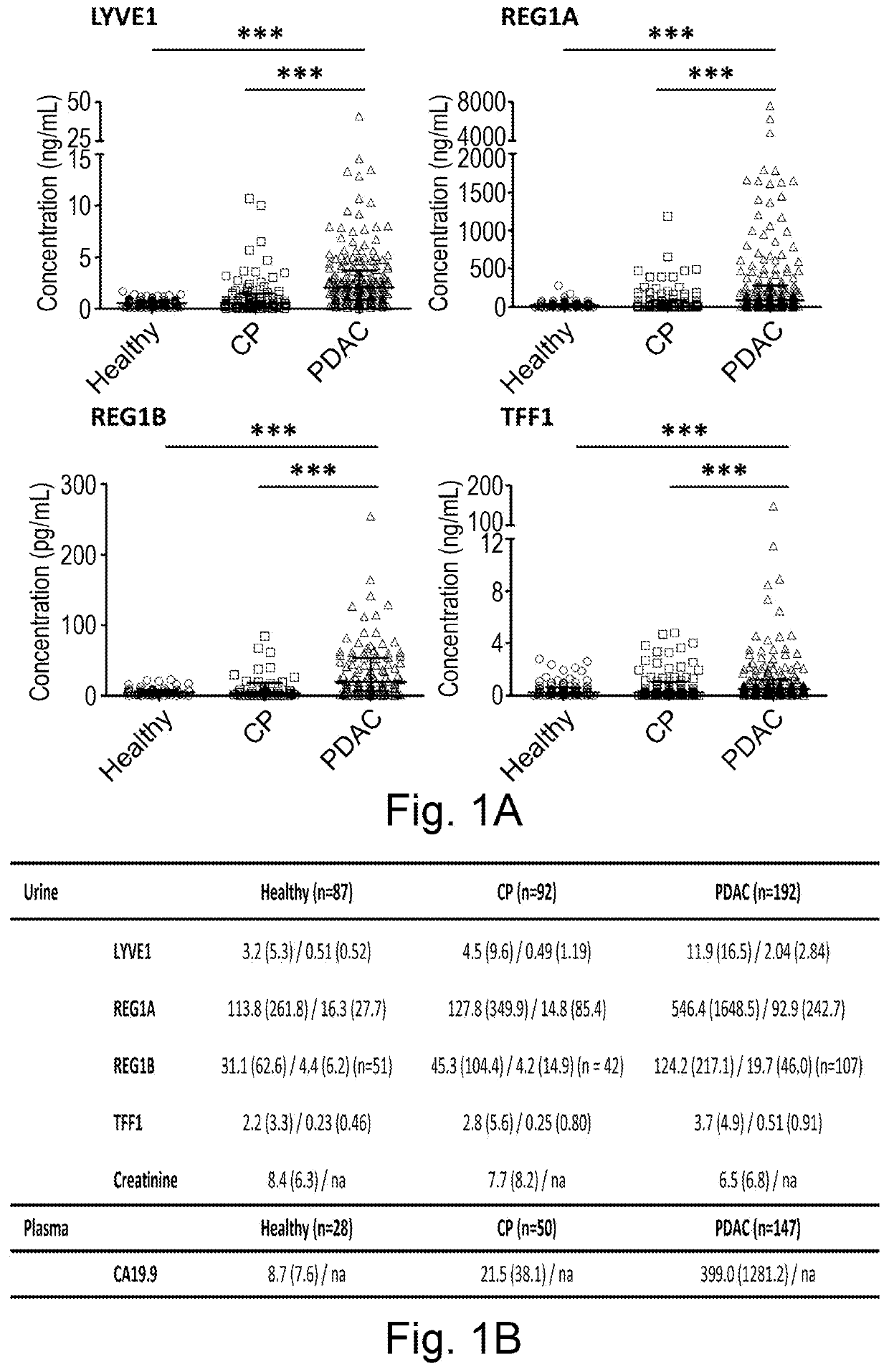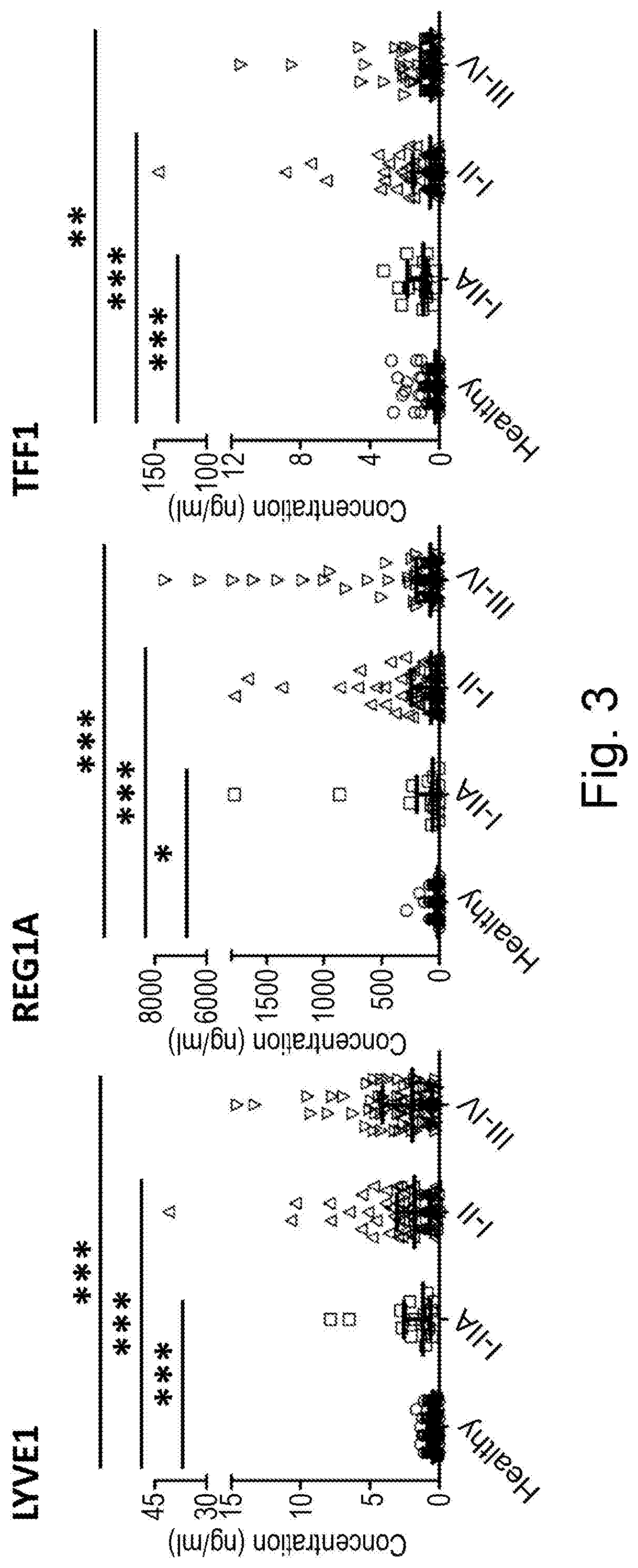Biomarkers for pancreatic cancer
a pancreatic cancer and biomarker technology, applied in the field of pancreatic cancer, can solve the problems of only being offered palliative treatment, affecting the detection of pdac, and affecting the survival of patients,
- Summary
- Abstract
- Description
- Claims
- Application Information
AI Technical Summary
Benefits of technology
Problems solved by technology
Method used
Image
Examples
examples
Clinical Specimens
[0167]Healthy, CP and PDAC urine specimens were obtained from the Royal London Hospital (RLH) for the discovery phase (n=18) and from RLH and University College London (later on jointly referred to as ‘LON’), the Department of Surgery, Liverpool University (‘LIV’), and the CNIO Madrid, Spain (SPA), (in total 371 urines) for validation purposes. Urine samples for patients with other benign and malignant hepatobiliary pathologies (n=117) were obtained from LIV. All samples were collected with full ethical approval from the involved centres, and with informed consent from all individuals who donated urine samples. The specimens in all participating centres were collected using the same standard operating procedures: clean-catch, midstream urine was collected, frozen within 2 hours of collection and stored at −80° C. until utilized. Of importance, all the samples were derived from patients with no history of renal diseases; dipstick test analysis (Bayer multistix SG 08...
PUM
| Property | Measurement | Unit |
|---|---|---|
| size | aaaaa | aaaaa |
| concentration | aaaaa | aaaaa |
| thermostable | aaaaa | aaaaa |
Abstract
Description
Claims
Application Information
 Login to View More
Login to View More - R&D
- Intellectual Property
- Life Sciences
- Materials
- Tech Scout
- Unparalleled Data Quality
- Higher Quality Content
- 60% Fewer Hallucinations
Browse by: Latest US Patents, China's latest patents, Technical Efficacy Thesaurus, Application Domain, Technology Topic, Popular Technical Reports.
© 2025 PatSnap. All rights reserved.Legal|Privacy policy|Modern Slavery Act Transparency Statement|Sitemap|About US| Contact US: help@patsnap.com



